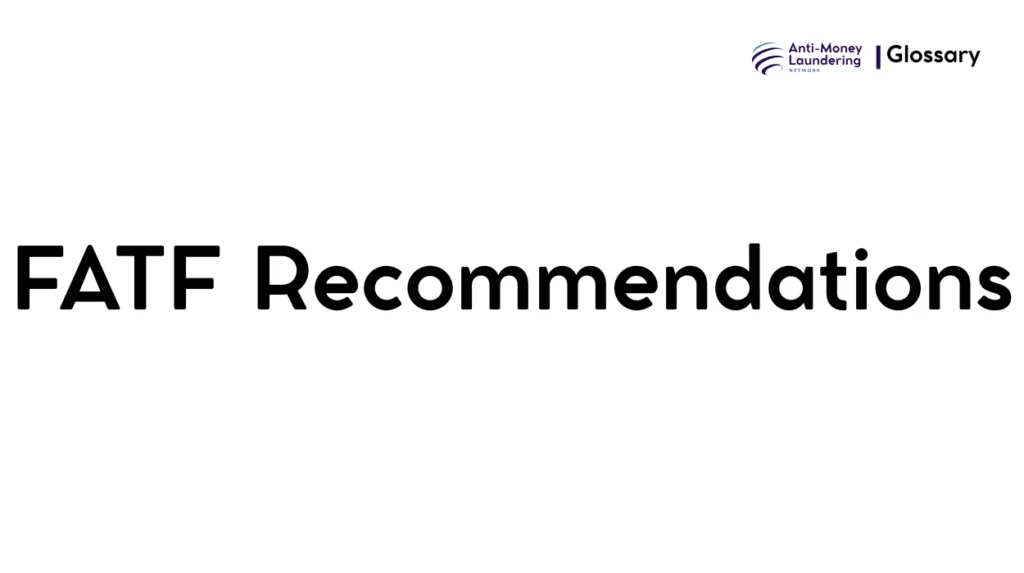Definition
The FATF Recommendations are a comprehensive set of internationally agreed-upon guidelines designed to combat money laundering, terrorist financing, and other related financial crimes. Developed by the Financial Action Task Force (FATF), these standards provide a framework for countries and financial institutions to establish robust Anti-Money Laundering (AML) and Counter-Terrorism Financing (CTF) regimes. They emphasize a risk-based approach ensuring that preventive measures are proportionate to the level of risk identified.
Purpose and Regulatory Basis
The primary purpose of the FATF Recommendations is to protect the global financial system from abuse by criminals and terrorists by setting minimum standards for AML and CTF efforts worldwide. These recommendations create a harmonized approach, enabling international cooperation and effective enforcement across jurisdictions.
Key regulatory influences include:
- Financial Action Task Force (FATF): The originator and updater of the recommendations.
- USA PATRIOT Act: Incorporates FATF principles, strengthening the US AML framework.
- European Union Anti-Money Laundering Directives (AMLD): Align with FATF standards to ensure consistency across EU member states.
These regulations underpin national laws and guidance, making adherence imperative for compliance officers and financial institutions globally.
When and How it Applies
The FATF Recommendations apply continuously across financial institutions, designated non-financial businesses and professions (DNFBPs), and regulatory authorities. They are triggered whenever an institution engages in financial transactions, especially during:
- Customer onboarding and KYC (Know Your Customer) processes.
- Monitoring and reporting suspicious transactions.
- Conducting risk assessments related to customer profiles, products, services, and geographies.
For example, banks must verify customer identities, apply enhanced due diligence for politically exposed persons (PEPs), and report suspicious activities to Financial Intelligence Units (FIUs). Real-world application ensures that illicit funds are detected, reported, and prevented from integrating into the legitimate financial system.
Types or Variants
The FATF Recommendations collectively cover several thematic areas, each with specific requirements:
- Preventive Measures: Customer due diligence, record-keeping, and transaction monitoring.
- Transparency and Beneficial Ownership: Identifying true owners behind companies and trusts.
- Detection and Reporting: Suspicious transaction reporting mechanisms.
- Powers and Responsibilities: Assigning investigative and supervisory authority to regulators.
- International Cooperation: Facilitating cross-border exchange of information.
Within these, institutions may implement variant procedures depending on their sector, size, or jurisdictional requirements, applying risk-based approaches to optimize compliance efforts.
Procedures and Implementation
Compliance with FATF Recommendations involves multilayered steps:
- Risk Assessment: Institutions must conduct comprehensive assessments of money laundering and terrorist financing risks.
- Customer Due Diligence (CDD): Verify identities, understand ownership structures, and screen against sanctions and PEP lists.
- Ongoing Monitoring: Track transactions to detect unusual or suspicious patterns.
- Record Keeping: Retain transaction and identification data for mandated periods.
- Reporting: Timely submission of Suspicious Activity Reports (SARs) to relevant authorities.
- Training and Awareness: Regular staff education on AML policies and procedures.
Effective implementation also requires IT systems capable of screening, monitoring, and analytics, as well as internal controls authorized by senior management.
Impact on Customers/Clients
From the customer perspective, FATF Recommendations translate to enhanced transparency and scrutiny. Customers may experience:
- Identity verification and documentation requests.
- Limitations on anonymous accounts or transactions.
- Additional inquiries for high-risk individuals such as PEPs.
- Potential delays due to enhanced due diligence.
While these measures protect clients by reducing fraud and illicit activity risk, they also impose compliance obligations that must be managed carefully to ensure privacy and fairness.
Duration, Review, and Resolution
AML compliance under FATF is an ongoing obligation. Institutions must:
- Periodically review customer information, especially for high-risk clients.
- Update risk assessments to reflect evolving threats.
- Maintain records for prescribed durations (commonly five to seven years).
- Continuously refine systems and controls based on regulatory feedback and audit findings.
Regular internal and external audits, coupled with supervisory inspections, ensure sustained adherence to FATF standards.
Reporting and Compliance Duties
Institutions are legally required to:
- Designate AML compliance officers.
- File SARs promptly upon detecting suspicious transactions.
- Cooperate with regulatory and law enforcement investigations.
- Implement robust internal controls tailored to identified risks.
- Maintain comprehensive documentation evidencing compliance efforts.
Failure to comply can result in severe penalties, including fines, sanctions, reputational damage, and operational restrictions.
Related AML Terms
FATF Recommendations intersect with several core AML concepts:
- Know Your Customer (KYC): A vital component of CDD mandated by the recommendations.
- Politically Exposed Persons (PEPs): Subject to enhanced due diligence under FATF rules.
- Suspicious Transaction Reporting: Mechanism to alert authorities to potential AML issues.
- Beneficial Ownership: Identifying the individuals who ultimately own or control assets.
- Financial Intelligence Units (FIU): National agencies that receive and analyze suspicious transaction reports.
Understanding these concepts holistically enables institutions to build effective AML frameworks.
Challenges and Best Practices
Common challenges include:
- Transitioning from rule-based to risk-based approaches.
- Managing the complexity of cross-border transactions and correspondent banking.
- Balancing customer experience with compliance demands.
- Keeping pace with evolving technologies and criminal techniques.
Best practices suggest:
- Leveraging automation and AI-driven monitoring tools.
- Conducting regular training and fostering a compliance culture.
- Ensuring senior management engagement and accountability.
- Collaborating with peers and regulators for intelligence sharing.
Recent Developments
FATF continually updates its Recommendations to address new risks such as:
- Virtual assets and cryptocurrencies, with guidelines for virtual asset service providers.
- Enhanced focus on proliferation financing.
- Strengthening beneficial ownership transparency requirements.
- Emphasizing regional risk considerations and tailored responses.
Technological advancements in regulatory technology (RegTech) aid institutions in efficient compliance and risk management.
The FATF Recommendations are the cornerstone of global AML compliance, providing a unified and dynamic framework to detect, prevent, and disrupt money laundering and terrorist financing activities. For compliance officers and financial institutions, understanding their scope, application, and evolving nature is essential to safeguarding financial systems, maintaining regulatory compliance, and upholding institutional integrity.

